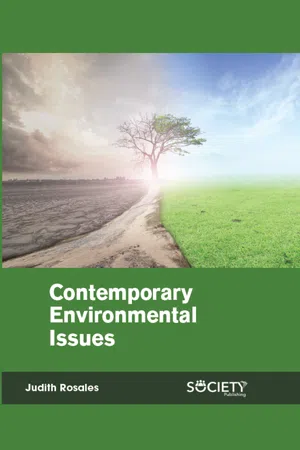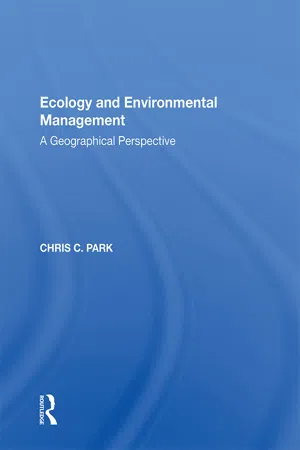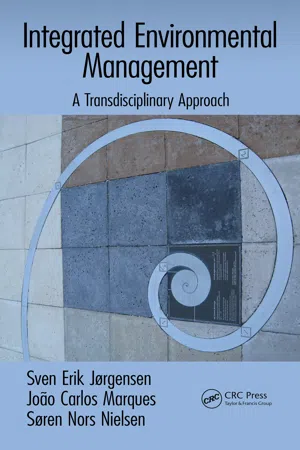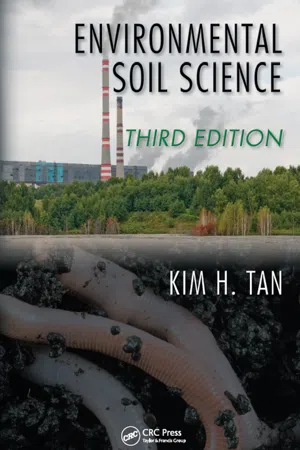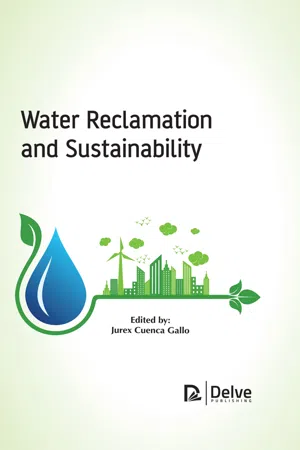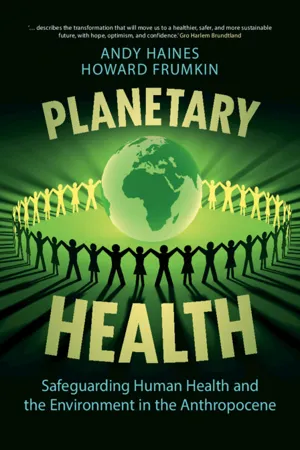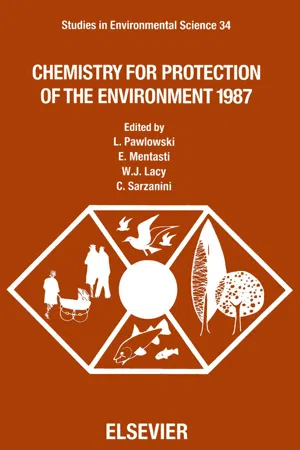Geography
Pollution
Pollution refers to the introduction of harmful substances or contaminants into the natural environment, causing adverse effects on ecosystems, human health, and well-being. It can take various forms, such as air, water, and soil pollution, and is often the result of human activities, including industrial processes, transportation, and waste disposal. Efforts to mitigate pollution involve regulation, technology, and public awareness campaigns.
Written by Perlego with AI-assistance
Related key terms
1 of 5
10 Key excerpts on "Pollution"
- eBook - PDF
- Judith Rosales(Author)
- 2019(Publication Date)
- Society Publishing(Publisher)
Pollution is defined as the introduction of harmful substances or products into the environment, which is typically foreign substances, particularly a contaminant or toxin that produces some kind of a negative or harmful impact on the environment or living beings. Pollution presents in many forms ranging from chemicals in the form of gases or liquids, noise, energy sources such as light or heat, or solids such as the types of waste that end up in landfills. Even naturally occurring substances, such as carbon dioxide and mercury, can be considered polluted when additional quantities are added to the environment in unsafe proportions by industries which can have detrimental effects on the environment and all forms of lives (Figure 2.1). One of the greatest problems that the world is facing today is that of environmental Pollution, which is causing grave and irreparable damage to the natural world and human society with about 40% of deaths worldwide being caused by water, air, and soil Pollution and coupled with human overpopulation has contributed to the malnutrition of 3.7 billion people worldwide, making them more vulnerable to diseases. Contemporary Environmental Issues 28 Figure 2.1: Illustrating the contribution towards environmental Pollution. Source: https://cdn.pixabay.com/photo/2017/06/04/04/16/warm-ing-2370285_960_720.jpg Pollution happens when the natural environment cannot destroy an element without creating harm or damage to itself. The elements involved are not produced by nature, and the destroying process can vary from a few days to thousands of years. In other words, Pollution takes place when nature does not know how to decompose an element that has been brought to it in an unnatural way, such as the use of plastics. Every day the Government trying to restrict the use of plastics and plastic bags and taking many initiatives by imposing fines also to reduce its use, since it is harmful to the environment and cannot be decomposed naturally. - eBook - ePub
- Roger Park(Author)
- 2019(Publication Date)
- Routledge(Publisher)
First is the massive increase in industrial Pollution and energy conversion in recent decades, which lead to very large flows of materials and energy from concentrated states in nature to degraded and diluted states in the environment. These have led in particular to changes in the physical, chemical and biological status of the atmosphere and the hydrosphere (both of which are of basic importance to the overall stability of the biosphere – see Chapter 2). The second factor is the increasing introduction of exotic materials into the environment. These are materials to which natural systems cannot adapt (or at least they cannot adapt quickly), or adaption may occur in some species but not in others. The balance between species can thus be affected, which can in turn trigger off latent instability in the ecosystems affected by the materials. 7.1b Definitions of Pollution Because of the differing viewpoints on Pollution, there are a variety of ways in which Pollution can be defined. Thus, for example, the economist might adopt Cottrell's (1978) definition of Pollution as 'the consumption of environmental quality', whilst the scientist might favour the definition offered by the Natural Environmental Research Council (1976) that it is the 'release of substances and energy as waste products of human activities which results in changes, usually harmful, within the natural environment'. Lee and Wood (1972) have isolated three criteria to be used in defining Pollution. One is that it must result from a particular form of human activity - the disposal of wastes. A second is that it occurs where the disposal of wastes leads to damage (whether direct or indirect, and over the short or long terms). They maintain that it is also restricted to those circumstances where the effect of the damage is met by third parties (it is not self-inflicted, or inflicted on employees) - eBook - PDF
- Marcel van der Perk(Author)
- 2017(Publication Date)
- CRC Press(Publisher)
In fact, the most widespread environmental Pollution involves ‘natural’ compounds (for example, carbon dioxide) and fertilisers (such as nitrate). Furthermore, Pollution is not restricted to substances, but can also refer to energy wastes, such as heat, light, and noise. In all cases, Pollution alters the chemical, physical, biological, or radiological integrity of soil and water by killing species or changing their growth rate, interfering with food chains, or adversely affecting human health and well-being. Note that some experts distinguish between Pollution and contamination. They use the term contamination for situations where a pollutant is present in the environment, but not causing any harm, while they use the term Pollution for situations where harmful effects are apparent (see Alloway and Ayres, 1997). However, the distinction between contamination and Pollution may not be clear, because harmful effects may be present but unobserved. The above definition of Pollution and contamination avoids this problem, so in this book the two terms are used interchangeably. Human activity is unevenly distributed over the world; the Earth’s surface, too, is variable by nature. As a result, the intensity and consequences of environmental Pollution vary from place to place. Of the 136 million km 2 land surface on Earth, about 10 percent is used as arable land and 25 percent consists of productive pasture and of forests that might be converted into agricultural land. The pursuit of ever-higher agricultural yields, which has been made possible through technological innovation and the cultivation of marginal areas, has resulted in widespread degradation of agricultural land. In the past half-century, 40 percent of the world’s agricultural land has been degraded by accelerated erosion by wind and water, salinisation, compaction, nutrient exhaustion, Pollution, and urbanisation (Millennium Ecosystem Assessment, 2003). - eBook - PDF
Integrated Environmental Management
A Transdisciplinary Approach
- Sven Erik Jörgensen, Joao Carlos Marques, Søren Nors Nielsen(Authors)
- 2015(Publication Date)
- CRC Press(Publisher)
107 6 The Pollution Sources and Effects 6.1 Pollution Sources This section provides an overview of Pollution forms. We distinguish between point sources and nonpoint sources and can identify 13 forms of Pollution. The impact on our environment is mainly due to three factors: the increasing population, the increasing consumption and production by us, and our use of technology, which can increase or decrease the impact depending on the technology. Pollution is defined as the introduction of contaminants into the natural environment that cause adverse and undesirable changes in the ecosystems. Pollution can either be matter such as chemical substances or energy, such as noise, heat, or light. Pollutants, the components of Pollution, can either be human-controlled—it means as a result of our activities—or naturally occur-ring contaminants resulting from natural events, for instance a volcanic erup-tion. It is very important to distinguish between point source and nonpoint source Pollution, because the two sources will in most cases require different tool boxes to be eliminated. Environmental technology is developed to solve point sources Pollution and will in far most cases not be applicable to non-point Pollution, whereas ecological engineering is better able to cope with nonpoint Pollution. Therefore, it is important to consider the entire spectrum of possible solutions for each of the sources. Point sources are, for instance, discharge from wastewater treatment plants, discharge of wastewater from industries, smoke from a chimney, or ash from a solid waste incineration plant. Nonpoint sources are diffuse and can be exemplified by the agricul-tural Pollution by drainage water containing pesticides and nutrients or by storm water. Typical analyses of storm water and agricultural drainage water are shown in Table 6.1. The Pollution is often classified by the sphere that is polluted. When the hydrosphere is contaminated, it is denoted as water Pollution. - eBook - PDF
- Dhankhar, Rajesh(Authors)
- 2021(Publication Date)
- Daya Publishing House(Publisher)
A Environmental Pollution Definition Types of Pollution Disaster Management Definition ny change in the physical, chemical and biological characteristics of air, water and soil that affect the health or activities of human beings or other forms of life in an undesirable manner is the result of Pollution. Pollution not only causes physical harm but also psychological distress, foul odours, unpleasant sights, noise, heat etc. In other words, Pollution is a direct or indirect change in any component of the biosphere that is harmful to the living components. This ebook is exclusively for this university only. Cannot be resold/distributed. Pollution is caused by pollutants. Some of the main pollutants are gases, metals, deposited matter, poison, sewage water, fertilisers, radioactive substances, heat and noise. These pollutants are of two types–biodegradable pollutants and non-biodegradable pollutants. The substances that decompose slowly in the natural environment are known as non biodegradable whereas those substances that can decompose naturally in the environment are known as biodegradable, such as sewage waste. The sewage wastes are rapidly decomposed by natural processes. Non biodegradable substances accumulate along the food chain and became biologically magnified. Types of Pollution Pollution is of two types: Natural Pollution: Pollution that originates from natural processes. Artificial Pollution: Pollution that originates from the activities of man. Air Pollution When the concentration of normal component of air or some chemical added, or formed in the air upto the point of causing harm to the living organisms or to materials. The addition of chemical to air leads to Pollution of air is called Pollution or atmospheric Pollution. Air Pollution is one of the most dangerous Pollution and reported mainly in the metropolitans and industrial area. The first case of air Pollution was found in Belgium 1990. - eBook - PDF
- Kim H. Tan(Author)
- 2009(Publication Date)
- CRC Press(Publisher)
425 CHAPTER 11 SOIL AND Pollution 11.1 FORMS OF Pollution The concepts and definitions of Pollution were provided in Chapter 8 and the differences between Pollution and contamination were also explained in Section 8.2.2 as necessary parts of the topic on the chemical degradation of soils. This chapter will specifically address Pollution of soils and their causes in detail, which for several reasons were felt not appropriate for discussion in Chapter 8 . Though the topic of Pollution would have been considered by some closely related to the degradation of soils (but not necessarily so by others), a detailed discussion on soil Pollution would have made Chapter 8 excessively long and may interrupt the sequence of reading apprehension. Soil Pollution is generally caused by the introduction of large amounts of both harmless and harmful materials, usually in the form of waste, into the soils, which in turn may spread to become water and air Pollution. The common pollutants are organic and inorganic waste from large livestock operations, municipal landfills, food processing plants, oil refineries, industry and many more. In the modern society of today, Pollution can also be caused by sophisticated, high-tech operations. For example, noise Pollution, due to excessive noise from tractor trailer trucks and cars on interstate highways and from flights of supersonic aircrafts, is a health hazard. Excessively loud music 426 Chapter 11 from amplifiers in cars and houses is also a big, deafening nuisance, resulting in possible hearing loss and high blood pressure. Auto-mobiles and tractor trailer trucks are allegedly the sources of ninety percent of unwanted noises. Thermal Pollution, by discharge of water coolants from power plants and nuclear facilities, causes rapid temperature changes in rivers and lakes, affecting aquatic life. This is another type of Pollution created by modern technology. - eBook - PDF
- Jurex Cuenca Gallo(Author)
- 2019(Publication Date)
- Delve Publishing(Publisher)
The topic of water Pollution and contamination is being picked for the reason that it is an indispensable part of all living organisms and from past some time, it is taken for granted by human beings (Figure 1.1). Figure 1.1: Nowadays, water Pollution is the most crucial type of Pollution. Source: https://blog.ipleaders.in/how-and-where-a-common-citizen-can-file-a-complaint-against-water-Pollution-in-india/ Water Pollution Around the World 3 In simple terms, water Pollution can be defined as a mere contamination of natural water resources like rivers, oceans, lakes, groundwater, and also aquifers. This kind of environmental degradation and contamination takes place when wastes and disastrous pollutants are indirectly or directly released into water bodies without adequate or proper water treatment in order to remove harmful compounds and chemicals. Water Pollution is a global issue to a varying degree, place to place and should be fought back collectively. There can be multiple definitions to the water Pollution. In general terms, it says that when one or more harmful compounds start to build up in water and increase to such an extent that they start to create troubles for natural flora and fauna and also for human beings. Lakes, oceans, rivers, and other inland water bodies can automatically and naturally absorb (clean up) a limited amount of pollutants by harmlessly dispersing the Pollution. For example, if a small cup of blue ink is poured into a large lake, the ink will disappear very quickly into the lake because of the very large volume of clean water present in the lake. This ink is still present in the lake, but is not visible because of its very low concentration. At this level, which is very small, the chemicals present in the ink, probably will not create some real troubles. While on the other hand, if gallons of blue ink are poured into the lake every second with the help of a pipe, the river water will quickly get contaminated and turn blue. - eBook - PDF
Planetary Health
Safeguarding Human Health and the Environment in the Anthropocene
- Andy Haines, Howard Frumkin(Authors)
- 2021(Publication Date)
- Cambridge University Press(Publisher)
Still another class of pollutants, the plastics, discarded in waterways, flow to oceans and accumulate in massive ocean gyres, cluttering the beaches of remote islands (7, 8). So the interconnections of planetary processes, and the fact that pollutants know no boundaries, mark Pollution as a Planetary Health problem – and one that, as discussed below, requires global cooperation to address. There is a proposed planetary boundary related to the introduction of novel entities, defined as ‘new substances, new forms of existing substances and modified life-forms that have the potential for unwanted geophysical and/or biological effects’ (1), particularly when they are persistent, widely distributed, and potentially harmful to planetary processes or systems. Specifying a single boundary for a complex mixture of novel entities is, however, a challenge and is currently beyond the capabilities of the science community. The Global Burden of Pollution The Lancet Commission on Pollution and Health showed compellingly that Pollution is a neglected cause of a large burden of ill-health (9). In 2018, the Commission estimated that 9 million deaths were attributed to Pollution, amounting to 16% of premature deaths worldwide, three times as many as malaria, tuberculosis, and AIDS combined. Ninety two per cent of Pollution-related deaths occur in low- and middle-income countries (LMICs) with the highest burden in rapidly industrializing countries. Estimates of the disease burden from Pollution, such as those of the Lancet Commission, are likely to understate the true burden, as depicted in Figure 3.1 (9). Pollutants in Zone 2 of the figure have adverse effects that are not fully characterized, precluding reliable estimates of disease burden; examples include soil Pollution by heavy metals and toxic chemicals at contaminated industrial and mining sites. Zone 3 encompasses emerging chemical threats whose effects are only now coming into focus. - L. Pawlowski, E. Mentasti, W.J. Lacy, C. Sarzanini(Authors)
- 1988(Publication Date)
- Elsevier Science(Publisher)
Another factor is the localization of the monitoring stations which depends on an accurate analysis of the industrial and urban sites and of the distinctive nature of the territory. The ecological “history” of the site should also direct the choice of the sanipling position. The territorial characteristics of the Pienionte Region present a wide variety of situations which may help to discuss the above mentioned points. 18 The problem of atmospherical and soil Pollution cannot be considered as something new for it has accompanied mankind in all aspects of his life. The fact that Pollution is perceived depends on an awareness of its existence. Our awareness is due to technological progress which both creates more Pollution and provides US with the means to reveal it and consequently prevent it. One of our past and present difficulties is that the growth of Pollution due to human activities and then its identification do not occur at the same time. Today, certainly, we have more reliable ideas about what the polluting factors might be and they must be checked out even if the real toxic nature of a substance cannot always be fully determined. However, we are able to work out tables that give us a fair idea of what to look for and enable us to classify the pollutants. We can then construct suitable parameters for identification and to give us a chance to control the most important sources of industrial and urban Pollution. Legislation covers different types of waste from liquid and solid waste to emission of gas. In the case of industrial waste, special attention has recently been paid to solid waste, the elimantion of which can seriously affect the quality of water and of the atmosphere through the spreading of pollutants coming from the disposal processes. A territory like that surrounding the city of Turin, with its industrial vocation, offers a wide field of study for the resulting pollutants.- eBook - PDF
- Rose Marie O. Mendoza(Author)
- 2019(Publication Date)
- Arcler Press(Publisher)
Most of the human actions can adversely affect the water. The quality of water is influenced by direct point source as well as diffuse Pollution which originate from rural and urban populations, farming and industrial emissions. Point source Pollution because of sewage treatment, diffuse Pollution because of farming and industrial discharge are recognized as the main sources (Drever, 1988; McLaren, 1990) of water Pollution. The key pollutants from agriculture include pesticides, nutrients, fecal microbes, and sediment. While harmful chemicals and oxygen-consuming substances are more connected to point source discharges (Masters & Ela, 1991; Stumm & Morgan, 2012). The diagram below shows several sources of nitrogen Pollution in water. Usually, a distinction can be made amid: • point sources, such as discharges from industry, urban wastewater, and fish farms; • Diffuse sources, such as losses from agriculture, background losses (for instance, forests), losses from distributed dwellings and atmospheric deposition on water bodies (for instance, lakes or marine areas). Introduction to Water Pollution and Water Quality 3 Figure 1: Illustration of the marine nitrogen cycle and Pollution sources with nitrogen. (Source: http://www.eea.europa.eu/themes/water/water-Pollution/figures-and-maps/sources-of-Pollution/image_view_fullscreen) Figure 2: Sources of water Pollution. [Source: http://www.eea.europa.eu/themes/water/water-Pollution/figures-and-maps/sources-of-Pollution/image_view_fullscreen] Biochemical Ecology of Water Pollution 4 Water has both properties of a solvent as well as the ability to transport particles, and thus, can incorporate into itself several impurities that compromise the quality of water (Odoemelam, Okorie, & Oko, 2014; Jha & Machiwal, 2017). The quality of water is an outcome of natural phenomena and the actions of human beings. By and large, we can say that the quality of water is a function of land usage in the catchment area.
Index pages curate the most relevant extracts from our library of academic textbooks. They’ve been created using an in-house natural language model (NLM), each adding context and meaning to key research topics.
